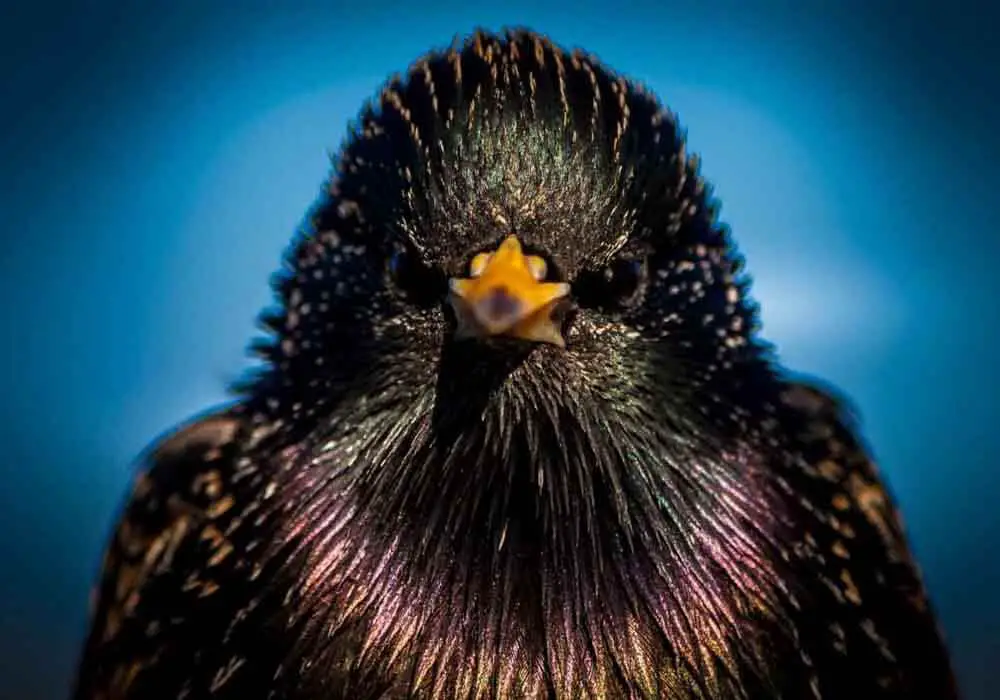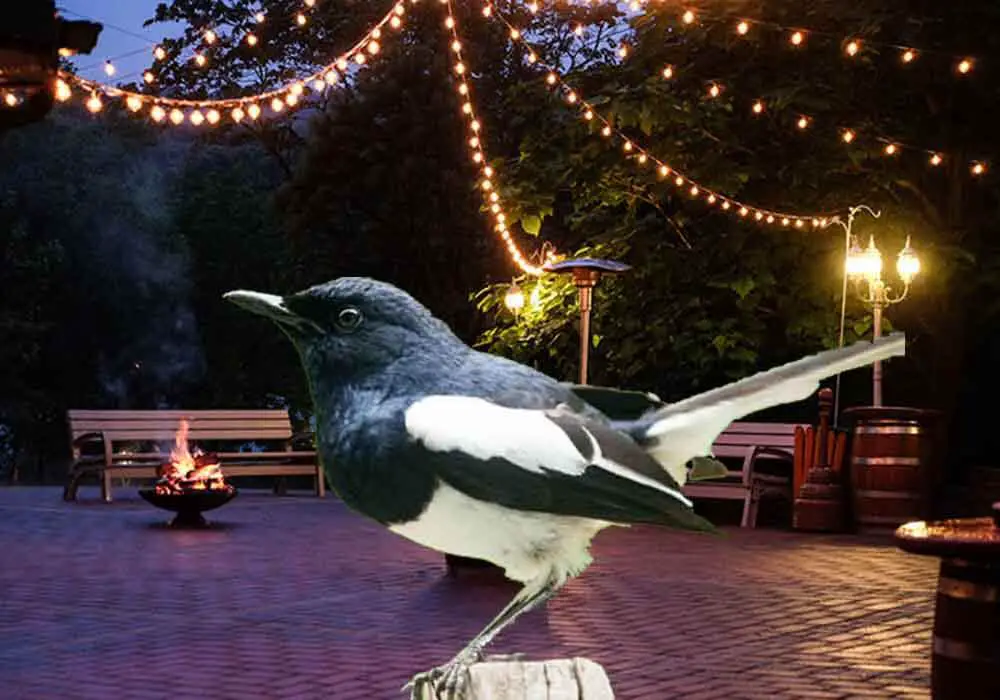How To Scare Away
Unwanted Birds
The Top 5 Ways Countdown
Vegetable gardens are a great way to get safe and cheap produce. However, gardeners are often faced with the question of how to scare away unwanted birds from their plants. Birds can be problematic in the sense that they are destructive to the crop, and can contaminate them with bird droppings.
Using a scarecrow is one of the best ways to scare away unwanted birds, but it sometimes loses its fear factor. The use of toy predators, electronic bird repellers, and terror eye balloons are proven alternatives to giving pest birds a fright that will keep them out of your gardens.
If this is currently a problem you are facing, keep reading this article to learn more about how you can bird-proof your garden and keep your crops free from droppings and other bird-borne diseases. By implementing some of these tactics, you won’t have to deal with unwanted birds ever again!

5. Put Up a Scarecrow
Scarecrows have been the stuff of bird nightmares–and the nightmares of anyone who watched the 1988 horror film Scarecrows–since time immemorial. The Greeks first used them in 2,500 BC and have been fixtures in our farm fields and gardens since.
Despite the idiom "bird-brained" denoting stupidity, birds are certainly wising up. It must be evolution or something because scarecrows seem to be losing their fear factor. Have you ever seen pictures of birds perched on a scarecrow? Yes, they exist as a testament to the desensitization of birds to human scare tactics.
However, I don't think scarecrows should be written off just yet. With some tweaking and strategic planning, scarecrows can still strike fear into the hearts of your feathered foes. Here are some tips and tricks to put the scare back in your scarecrow:
Embellish your scarecrow. As you will read later on in the article, reflective surfaces seem to have a deterrent effect on birds. Adding reflective streamers to your scarecrow could give it that final touch that would haunt any bird’s dreams.
- Move your scarecrow around. This can create the illusion that your scarecrow isn't just an immobile threat. It also makes your scarecrows seem more unpredictable.
- Change your scarecrow's clothes. If your scarecrow wears the same clothes all week, it will start raising some bird brows. To make your scarecrows seem more life-like, give them a change of clothes and move them around the garden.
- Have a spare scarecrow. Changing the clothes of your scarecrow could work–for a while. Having a spare scarecrow to swap in every once in a while could create the effect that the garden is guarded by more than one scarecrow.
- Make mechanical adjustments to your scarecrow. Scarecrows with a swivel mechanism that lets them move or rotate with the wind are much more effective than static scarecrows that remain rigid until they are moved.
4. Use Toy Predators As Reinforcements
Because of urbanization, humans are becoming less and less foreign to birds. We don't scare them like we used to. We've crept up to their space to such a point where we have become tolerated as settlers on what was once their habitat. That's perhaps why scarecrows have lost their scaring power. However, there is one thing that birds remain in utter fear of: birds of prey.
When you're lower on the food chain, evolution wires you to be afraid–very afraid–of the ones perched higher up on the food chain, which is why installing toy predators is such a stroke of genius. Some toy predators like the Galashield Owl Decoy (link to Amazon) are so life-like that they have proven to be highly effective in keeping your garden crops safe. And get this, its head rotates!
However, like the scarecrow, you will need to move even the most menacing toy predators around from time to time to create a sense of mobility. They will need to go through the motions of patrolling your gardens, or they, too, lose their scare-cred. Scarecrows and toy predators can join forces to protect your gardens from pest birds.
3. Install Electronic Bird Repellers
Now before you go calling PETA, electronic bird repellers aren't dangerous. They certainly don't electrocute birds if that was your first thought. Electronic bird repellers like the Bird-X BirdXPeller® Pro (link to Amazon) simply emit bird sounds and predator calls that effectively scare away pest birds from your garden plants. how to scare away unwanted birds
The BirdXPeller comes in two versions. The first version is most effective for pigeons, starlings, sparrows, and gulls. The second version is most effective for crows, blackbirds, grackles, cormorants, and ravens. Both versions can cover up to 1 acre of property. They are highly programmable, allowing you to choose sound, volume, and timing options.
They are a chemical-free and humane pest control alternative. They aren’t only used for gardens or farms, some buildings use them to keep their rooftops and walls bird-dropping-free. This principle is also useful for gardens. It keeps birds from contaminating your garden produce with droppings that can lead to a host of health problems.
2. Put Up Terror Eyes Balloons
This one has some mixed reviews. Although they are a highly effective bird scare tactic, they take some getting used to. Terror Eye Balloons like the Bird-X Scare-Eye® (link to Amazon) work because they mimic the glaring eyes of a predator bird. It helps that they move when the wind blows.
The eyes are made of reflective Mylar material that can put the fear of God in pest birds. And they are affordable considering how well they work and how much area they cover. One balloon covers an area of 6,000 square feet.
They are pretty easy to install. They only need to be inflated and secured to something stable. The only complaint about the Terror Eyes is they don't fit the rustic garden aesthetic. The terror eyes have also been known to have the same effect on children as they do on birds.
Despite all the objections against the Terror Eyes, they are some of the market's most effective yet harmless bird deterring options.
1. String Up Reflective Devices
Apparently, birds aren't fans of reflective surfaces. You can use this knowledge to your advantage by “bedazzling” your garden to make them bird-proof. There are different reflective surfaces you can use to achieve this. Here are some fine examples:
- Bird Scare Tape. You can use reflective Bird Scare Tape (link to Amazon) to keep birds out of your yard. All you have to do is string them up where they are visible to unwelcome visitors.
- Upgraded Bird Scare Devices. Alternatively, the Upgraded Bird Scare Devices (link to Amazon) on Amazon look like the danglers of wind chimes and add a touch of charm while effectively warding off pest birds.
- Reflective Pinwheels. Reflective Pinwheels (link to Amazon) are another example of reflective bird scares that keep the birds at a safe distance.
- Old CDs: If you have some old C.D.s lying around (remember those?), you can DIY your own reflective bird scares at nearly zero cost, and they can be just as effective.
How To Scare Away Unwanted Birds Final Thoughts
Avian populations are on the decline, and it is essential to find bird deterrents that are safe and humane. While deterring birds from natural food sources may seem contrary to helping the survival of their species, protecting your gardens from birds ensures that your garden plants remain safe for consumption.
Back To The TOP Of This How
To Scare Away Unwanted Birds Page

About the Author...
Richard Worden, a dedicated bird lover for over 20 years, I love to share my in-depth knowledge and passion for birds. Read more About Me and my expertise in this field.
- We Know Birds HOME ›
- How To Scare Away Birds From Your House Or Garden ›
- How To Scare Away Unwanted Birds



